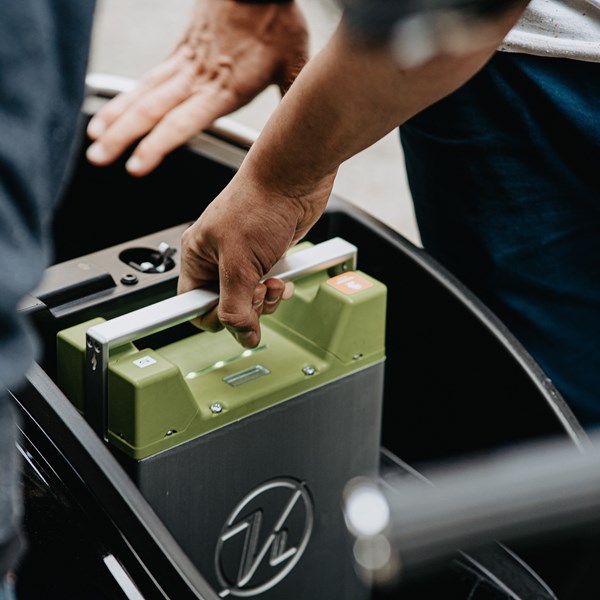Last Thursday GlobalFoundries and IBM announced they have reached a settlement in their long-running legal battle.
Both parties had launched formal disputes against the other. In 2021 IBM accused GlobalFoundries of breaching the terms of a $1.5 billion contract to make high-performance chips for IBM. Then in 2023 GlobalFoundries bought a claim against IBM for misappropriating its trade secrets and sharing them with Intel and Rapidus, a Japanese consortium.
In a joint statement the companies said that while the terms of the settlement remain confidential, the agreement will allow them to continue to collaborate moving forward.
This is particularly important for GlobalFoundries who has significantly improved its market position in the US chip manufacturing sector during the course of this dispute. Its position has strengthened further having received $1.5bn from the US government to expand its production facilities in New York and Vermont as part of the US government’s plan to increase domestic chip production to reduce spend with and reliance on non-US manufacturers.
The settlement immediately had a positive impact on both parties’ share price. GlobalFoundries’ share price rose by 2.61% while IBM’s increased by 0.49% increase.
WHAT DOES IBM AND GLOBALFOUNDRIES' DISPUTE REMIND US ABOUT THE PROTECTION OF TRADE SECRETS IN COLLABORATIONS?
When preparing any collaboration agreement, it is incumbent upon the parties to consider how to best protect any IP rights that are to be used or generated within the project. Dealing with this point will raise issues of ownership, registration, enforcement and commercialisation. Any collaboration agreement will also, by necessity, include the need for clarity on how any of the parties’ respective confidential information can be used by the collaborating partner. The IBM/GlobalFoundries dispute underlines the need to expressly consider trade secrets as part of negotiating and documenting collaboration agreements; both the IP and confidentiality provisions and generally.
From a confidentiality position:
Trade secrets are a form of confidential information protected under common law confidentiality principles and must be treated as confidential (amongst other things) in order to remain a trade secret.
When disclosing a trade secret for example, if necessary as part of a collaboration, the recipient should be informed expressly of the confidential nature of the information and that it is the subject of trade secret protection. This avoids reliance on the common law’s assessment as to whether an obligation of confidence should be impliedly imposed in the circumstances.
Whilst confidentiality principles may arise automatically, creating strong contractual confidentiality obligations as part of any collaboration agreement is advised. This generally makes enforcement easier but also provides evidence to demonstrate that you are taking “reasonable steps” to keep the information a secret (a requirement of maintaining protection under the UK Trade Secrets Regulations 2018). We set out some guidance below:
- Define the term “trade secrets” clearly supported by examples of the types of information trade secrets can cover. This includes specifying any exclusions or limitations. For example, the secrets could only be used for particular projects or activities or within particular geographic regions.
- Set out each parties’ confidentiality obligations confirming that both parties must keep the other’s trade secrets confidential alongside provisions for the return of or destruction of the relevant materials at the conclusion of the contract. This includes agreeing the duration of the protection afforded by the contract. Trade secret obligations should be stated as lasting indefinitely (beyond the term of the contract) up until the point where the party owning the trade secret decides to end this form of protection (for example, as part of a commercial decision or due to a failure to maintain the formalities required to keep trade secret protection).
- Include clauses setting out who can access/use confidential information to progress the collaboration and if any of these people can produce written permission for third parties to use this information.
From an IP position:
Trade secrets are an asset that can be exploited and monetised. Trade secrets can be transferred or licensed for example. Maintaining the confidentiality of such trade secrets is therefore key in ensuring that the information remains exclusive and a valuable and exploitable asset. In addition, many commercially valuable formulas and information are held as a trade secret up until the point where the owner may decide to file for other formal protection for example, a patent. Maintaining confidentiality is key in being able to file for patent protection which requires that the invention has not been disclosed publicly prior to its filing for protection.
Whilst confidentiality in litigation proceedings is possible if pursuing a case under the common law of confidentiality, it is not guaranteed. Meanwhile, Regulation 10 of the Trade Secrets Regulations sets out obligations on those participating in litigation proceedings to preserve the confidentiality of any trade secrets the subject of those proceedings. You may also wish to set out exactly how the protection of the trade secrets will be enforced and what remedies and penalties will be incurred if access to the information is misused or misappropriated. This may include consideration of the forum for any dispute. Arbitration for example, may be considered appropriate due to its confidential nature which may provide comfort to trade secrets holders in the knowledge that commercially sensitive and valuable trade secrets will not be revealed as the subject of a public dispute.
WHAT ACTION CAN YOU TAKE IF YOUR TRADE SECRETS ARE MISUSED?
Trade secret owners should have an appropriate response plan in place to quickly handle any identified misuse of trade secrets. This should be carefully devised in collaboration with legal partners and may broadly contain steps which involve: firstly an inquiry as to the misuse itself including identifying the misuser and when and how they may have accessed this information; secondly securing any documentation relating to the trade secrets and collecting any other relevant evidence such as contractual agreements in place; and finally considering any legal action to take.
In its claim, IBM sought damages totalling $2.5bn in respect of financial and reputational damages arising from GlobalFoundries’ breach of contractual obligations. GlobalFoundries sought compensatory and punitive damages and an injunction to stop IBM from further disclosing and using its trade secrets.
In the UK, under the common law of confidentiality, the court has discretion to award the aggrieved party (amongst other things): an injunction requiring that the defendant for example cease use of the trade secret (often useful as a form of immediate relief); an Account of Profits awarding any profits from unlawful use of trade secrets to be calculated and delivered up to the aggrieved party; or damages, being a sum of money awarded in light of damage to the aggrieved party.
The UK Trade Secrets Regulations 2018 also set out a range of actions a business can take if its trade secrets are infringed or misused by competitors or, in the case of IBM and GlobalFoundries, by collaborating partners. These remedies generally mirror those available under the common law however instead, are expressly provided by statute rather than being at the court’s discretion. In addition, the common law provides the court with the discretion to award compensation.






